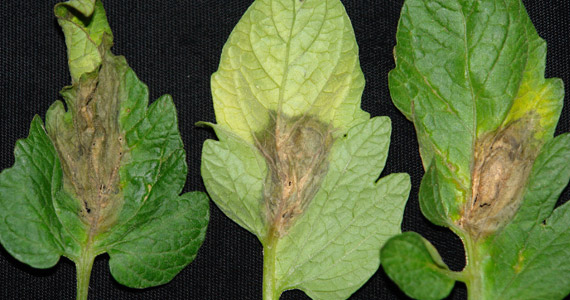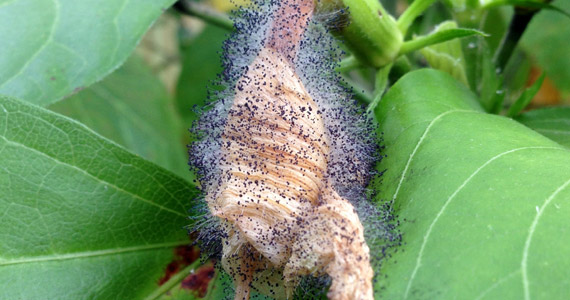Botrytis cinerea - Pests and Diseases

Briefly about the plague
- What is Botrytis?
- Botrytis cinerea is a necrotrophic fungus, meaning it kills its host to get all the nutrients it needs.
- What is there to see?
- The tissue on which it develops becomes dark and sometimes soft. This is due to the death of the host cells. Over time, a layer of hairy gray mold will form on these dark spots.
- What can be done about it?
- Never allow the infected plant or parts of the plant to come into contact with other plants.
Biological Cycle of Botrytis
The early development of gray mold usually begins in infected plant debris from previous crops left in the field. The mycelium present in the waste begins to develop when the temperature rises, for example in early spring. In bright light, the mycelium begins to develop structures called conidiophores. Spores, called conidia, are formed at the end of these conidiophores, which are then airborne and can come into contact with the leaves or stems of the crops.

Symptoms of the plague
The fungal infection in the flower is initially not visible. Chlorosis, tissue that is brown and wet near the site of infection, is one of the first symptoms that indicates a possible botrytis attack. A lighter colored spot on the flowers with a dark brown ring around it can indicate a fungal infection.
How to avoid the plague?
It is extremely important to rid the plant of all parts infected with Botrytis. The contaminated parts should be removed immediately.
Prevent infected plants or parts of these plants from coming into contact with other plants. Even the briefest contact can cause clouds of gray spores to spread across the sky. These spores will then land on healthy plants and contaminate them. Good ventilation is essential to maintain a slightly lower humidity around the leaves and flowers. For outdoor crops, it is advisable to cover the plants with a plastic cover such as a tunnel greenhouse when rain is expected. This prevents the plants from getting wet.
It is also important to be vigilant for pests such as caterpillars that can damage the cuticle, which B. cinerea can use to make it easier for the plant to enter. It is easier for the fungus to infect plants damaged by chewing pests. Other insects such as thrips can carry and spread Botrytis spores. CANNACURE can be sprayed on the plant to combat this disease.

Solutions to get the plague under control
Various microorganisms have proven successful in the control of Botrytis cinerea in a large number of crops. Clonostachys rosa ( Gliocladium roseum ) is a fungus used to prevent and control Botrytis attacks due to its ability to suppress spore production. Some nematode species have also been used to effectively control gray mold.
Many plant extract preparations are marketed primarily to prevent the attack and development of B. cinerea. Good results have been obtained with extracts of thyme, citrus seed, oregano, mint, garlic and pepper, to name a few. Another option to prevent Botrytis is to use CANNACURE on the plant.


